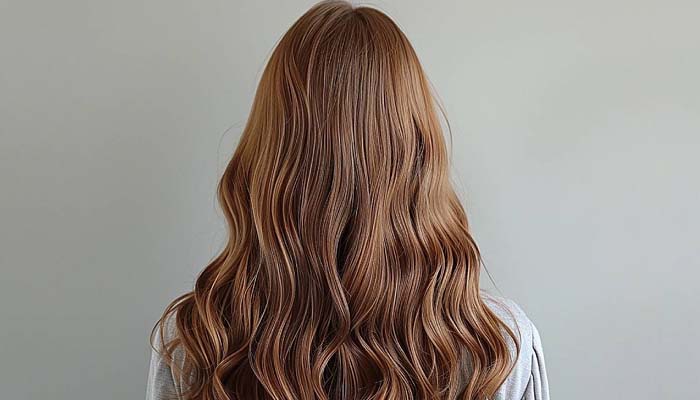Hair porosity is all about how well your hair absorbs and retains moisture. It’s basically how open or closed your hair cuticles are. Think of hair cuticles as tiny scales on the surface of your hair that decide how much moisture can go in and out of the hair shaft. The way your cuticles behave will determine whether your hair is hydrated or dry.
Hair porosity comes in three categories: low, medium, and high. Each type impacts how you should care for your hair.
- Low porosity hair has tightly closed cuticles. While this helps retain moisture, it also makes it hard for moisture to get inside in the first place.
- Medium porosity hair has more flexible cuticles, allowing moisture to enter easily but also retain it well.
- High porosity hair has very open cuticles. This allows moisture to get in easily, but it can leave just as quickly.
Factors like genetics, environment, and hair damage can affect your hair’s porosity, making it more open or closed.
What Affects Hair Porosity?
Your genes play a huge role in determining your hair’s porosity. If you have curly hair, you probably have higher porosity hair. Curly hair tends to be naturally drier, and its structure makes it harder for oils to travel down the strands, which can result in higher porosity.
Not sure what curl type you have? You can take a curl quiz to help you identify it. This can also give you a clue about your hair’s porosity.
While genetics matter, your hair porosity can change. Heat styling, dyeing, pollution, and sun exposure can all damage your hair, making the cuticles lift and increasing porosity. The more damaged your hair, the higher its porosity. If you use heat tools, bleach, or spend a lot of time in the sun, your hair may need extra protein and moisture to repair itself.
The 5 Levels of Hair Porosity
Hair porosity can be broken down into five levels:
- Grade 1 Porosity: Virgin hair with no damage. It’s hard for moisture to penetrate this hair type because the cuticles are tightly closed.
- Grade 2 Porosity: Virgin hair with minor exposure to environmental factors like sun and pollution. This hair is healthy but still retains its tight cuticle structure.
- Grade 3 Porosity: Hair that’s been chemically treated or colored. The cuticles are slightly open, allowing moisture in but losing it more quickly.
- Grade 4 Porosity: Bleached or heavily lightened hair. The cuticles are quite open, so the hair loses moisture easily.
- Grade 5 Porosity: Severely damaged hair. The cuticles are gone, leaving the inner hair exposed. This hair feels gummy and breaks easily, and often needs to be cut to restore health.
- Grades 1 and 2 are low porosity, grade 3 is medium, and grades 4 and 5 are high porosity. High porosity hair benefits from protein-rich products that help rebuild the cuticle and lock in moisture.
How to Test Your Hair Porosity
Wondering how to figure out your hair porosity? There are a few simple tests you can do.
The Glass of Water Test: Take a clean strand of hair and drop it into a glass of water. If it floats, you have low porosity hair. If it sinks slowly or stays in the middle, you have medium porosity. If it sinks straight to the bottom, your hair has high porosity.
The Texture Test: Run your fingers along a hair strand. If it feels smooth, your hair is low porosity. If it feels bumpy or rough, your hair is high porosity.
The Spray Test: Spray some water on clean, product-free hair. If the water beads up without soaking in, your hair has low porosity. If the water sinks in after a moment, you have medium porosity. If it absorbs right away, you have high porosity.
Caring for Different Hair Porosity Levels
Once you know your hair porosity, you can better understand how to care for your locks. Each porosity level needs different types of products and care routines.
Low porosity hair: This hair type needs lightweight products that won’t sit on the surface of the hair. Use heat or steam when deep conditioning to help open the cuticles and allow moisture in.
Read: US Deploys THAAD Missile Defence System to Israel After Iranian Missile Attack
Medium porosity hair: You’re in luck! Medium porosity hair is the easiest to care for. It absorbs moisture well and doesn’t lose it too quickly. Stick with a balanced routine that includes hydration and protein to keep your hair in good shape.
High porosity hair: This hair type needs lots of moisture and protein. Look for products that are rich in oils, butters, and proteins to help strengthen and hydrate your hair. Deep conditioning and protein treatments are a must to keep your hair strong and healthy.
Curly Hair and Hair Porosity
If you have curly hair, it’s likely you’re dealing with varying porosity levels, especially if you’re transitioning to natural hair. You might have low or medium porosity roots and high porosity ends due to past heat styling or chemical treatments. Always treat your hair for the highest porosity level, which needs more care and attention. Achieving a protein-moisture balance will help maintain healthy, bouncy curls.
Why Does Hair Porosity Matter?
Understanding your hair’s porosity is key to making the right product choices. If you use products that aren’t suited to your porosity, you might not get the results you want. Low porosity hair can become weighed down with heavy products, while high porosity hair might not get enough moisture from lightweight formulas.
Knowing your hair porosity can transform your hair care routine and help you achieve healthy, hydrated hair. Whether you have low, medium, or high porosity hair, the right care routine will help you lock in moisture and keep your hair looking its best.
Follow us on Google News, Instagram, YouTube, Facebook,Whats App, and TikTok for latest updates
